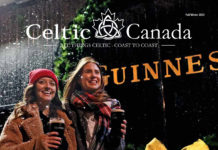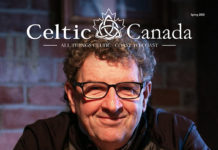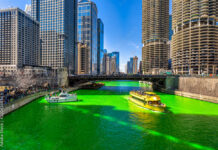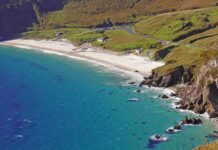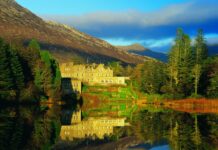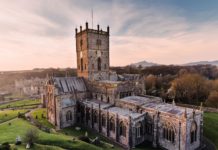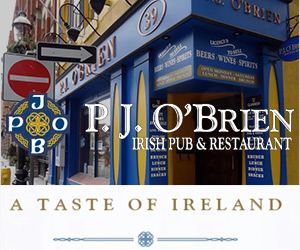With festivals celebrated in his name, and pilgrims coming from all over the world to trace his journey, here is the land that made St Patrick a legend.

In 130AD, Downpatrick ensured its place in history when the famed Greek scholar Ptolemy listed it as a town of note in Ireland. Now, however, it is known for being St Patrick’s final resting place. His body lies under the Memorial Stone in the grounds of the glorious Down Cathedral. Not far away, the Saint Patrick Centre shines a light on the arrival of Christianity in Ireland, reflecting on Patrick’s life through his captivity, slavery, and rise to sainthood.
Should you wish to visit St Patrick’s original church, look for Saul Church, built in 1932. Back in 432AD, St Patrick established his first church in a simple barn on this very site. Today, you can visit this tranquil spot and feel the flow of history beneath your feet.

If you’re looking to get under the skin of St Patrick, Armagh is the best place to start. When he visited this city, St Patrick called it his “sweet hill”, and founded his first large stone church in 445AD. The ecclesiastical capital of Ireland, there are two cathedrals bearing his name – the Church of Ireland cathedral on Sally Hill, and on the opposite hill the twin-spired Catholic St Patrick’s Cathedral.
Armagh’s two cathedrals are dedicated to him, while in the Armagh County Museum, the Armagh Public Library and No.5 Vicar’s Hill, you’ll find fascinating material highlighting the city’s role in the history of Christian Ireland.

Close your eyes as you stand on the slopes of Slemish Mountain in County Antrim and be transported back to a time of fearsome Vikings, scholarly monks, and the dying days of pagan Ireland. Battered by the wind and rain, St Patrick toiled here as a slave tending sheep from the age of 16 until he was 22.
On St Patrick’s Day, crowds undertake the short but steep walk to the summit, but you can visit at any time of the year and look out on scenery that has barely changed at all since St Patrick’s time: the Antrim Hills, the coast of Northern Ireland and Scotland, and the Bann Valley.
Source: Ireland.com





